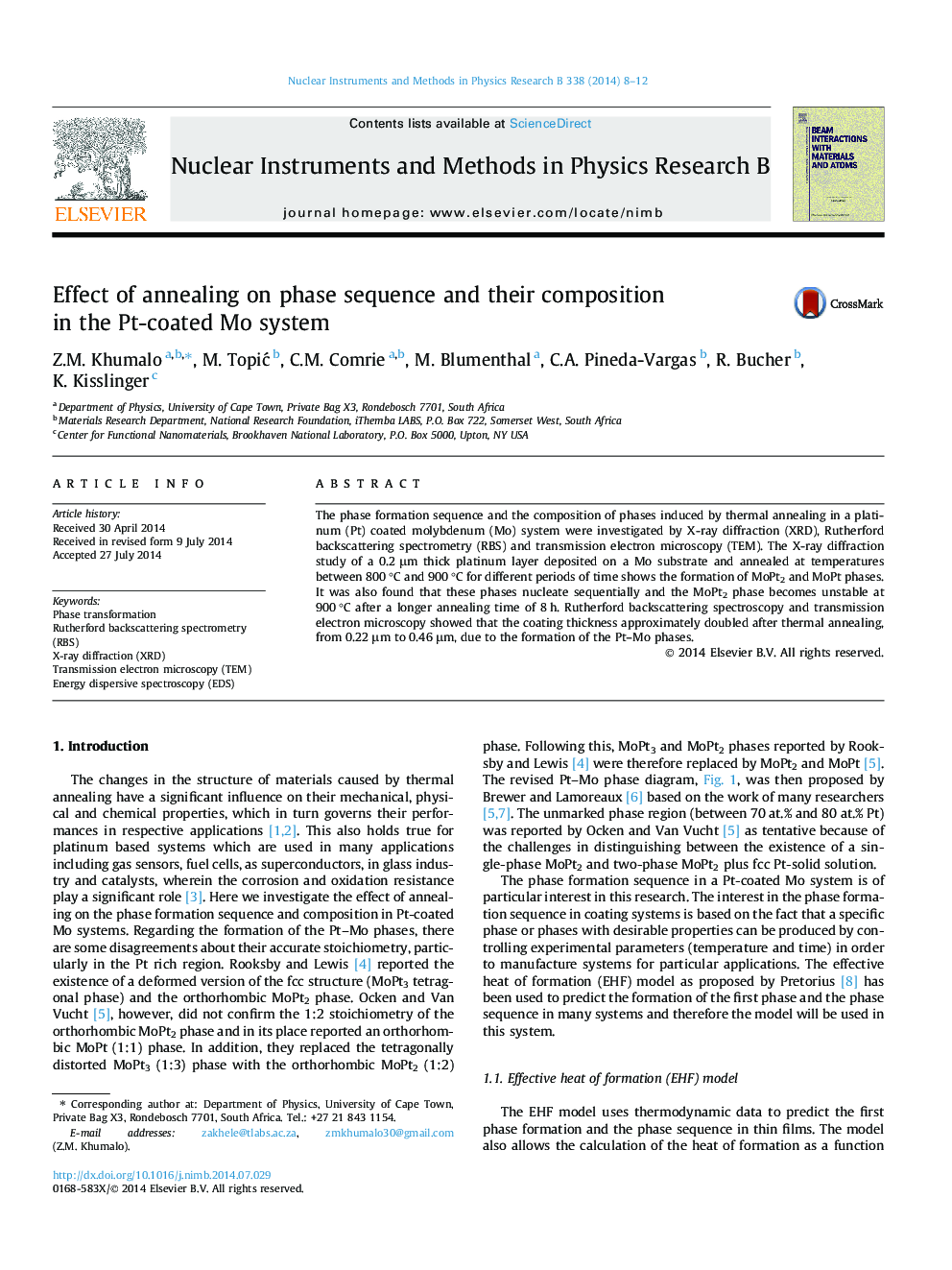| Article ID | Journal | Published Year | Pages | File Type |
|---|---|---|---|---|
| 8041083 | Nuclear Instruments and Methods in Physics Research Section B: Beam Interactions with Materials and Atoms | 2014 | 5 Pages |
Abstract
The phase formation sequence and the composition of phases induced by thermal annealing in a platinum (Pt) coated molybdenum (Mo) system were investigated by X-ray diffraction (XRD), Rutherford backscattering spectrometry (RBS) and transmission electron microscopy (TEM). The X-ray diffraction study of a 0.2 μm thick platinum layer deposited on a Mo substrate and annealed at temperatures between 800 °C and 900 °C for different periods of time shows the formation of MoPt2 and MoPt phases. It was also found that these phases nucleate sequentially and the MoPt2 phase becomes unstable at 900 °C after a longer annealing time of 8 h. Rutherford backscattering spectroscopy and transmission electron microscopy showed that the coating thickness approximately doubled after thermal annealing, from 0.22 μm to 0.46 μm, due to the formation of the Pt-Mo phases.
Keywords
Related Topics
Physical Sciences and Engineering
Materials Science
Surfaces, Coatings and Films
Authors
Z.M. Khumalo, M. TopiÄ, C.M. Comrie, M. Blumenthal, C.A. Pineda-Vargas, R. Bucher, K. Kisslinger,
